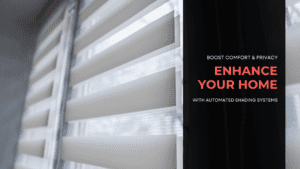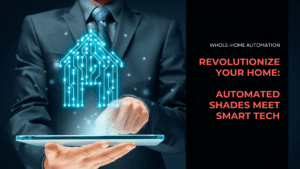Key Highlights
- Simplified Living: Embrace the convenience of controlling your home with a few taps on your smartphone or simple voice commands.
- Enhanced Security: Safeguard your home with smart security systems that offer remote monitoring, real-time alerts, and automated responses to potential threats.
- Energy Optimization: Reduce your carbon footprint and lower utility bills with smart devices that intelligently manage energy consumption based on your preferences and schedules.
- Personalized Comfort: Create the perfect ambiance and comfort levels tailored to your liking with automated lighting, temperature control, and entertainment systems.
- Seamless Integration: Experience the magic of a truly interconnected home where devices communicate seamlessly, simplifying everyday tasks and enhancing your lifestyle.
Introduction
Imagine a home where lights turn on automatically as you enter, the thermostat adjusts to your preferred temperature, and your favorite music follows you from room to room. This is the promise of home automation, where new technology transforms your living space into a smart home. Home automation allows you to control various aspects of your home using interconnected devices, offering unparalleled convenience, enhanced security, and optimized energy efficiency.
Understanding Home Automation Basics
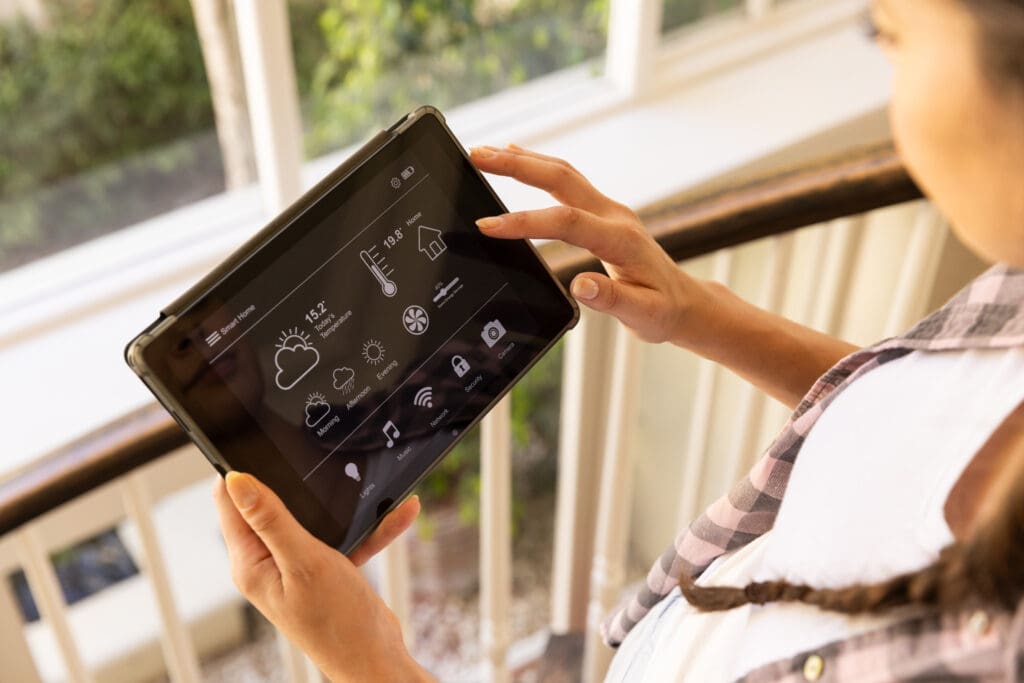
A home automation system connects different devices and appliances, allowing them to communicate and work together. This network of devices, often controlled through a central hub or mobile app, enables you to manage various aspects of your home from a single point. Smart homes rely on core technologies like the internet, wireless protocols (such as Wi-Fi, Bluetooth, and Zigbee), and sensors. These technologies enable devices to send and receive data, respond to commands, and automate tasks based on pre-set conditions or schedules.
The evolution of smart homes has been remarkable, going from a futuristic concept to a tangible reality for many homeowners. As technology advances, the possibilities for home automation continue to expand, offering even more sophisticated and integrated solutions for a truly connected living experience.
The Evolution of Smart Homes in the United States
The concept of the smart home has been around for decades but only recently has it become a practical reality for everyday homeowners in the United States. Early adopters were limited to expensive, custom-installed systems. However, the rise of affordable smart devices, increased internet connectivity, and user-friendly platforms has made smart home technology accessible to a much wider audience.
Today, millions of Americans enjoy the benefits of a smart home, from increased security to energy savings and improved quality of life. The adoption of smart home technology continues to grow as consumers become more aware of the convenience, affordability, and possibilities it offers.
From voice-controlled assistants to smart appliances and interconnected security systems, smart homes are changing how people live, work, and interact with their living spaces. As the technology matures, we can expect even more innovative solutions that further enhance comfort, security, and sustainability in homes across the United States.
Core Technologies Behind Home Automation
At the heart of any smart home lies a network of interconnected devices that communicate using various wireless protocols, collectively known as the Internet of Things (IoT). These core technologies enable seamless data exchange between devices, allowing them to share information, receive commands, and operate autonomously based on pre-defined rules.
Wireless protocols like Wi-Fi, Bluetooth, and Zigbee form the backbone of most home automation systems. Each protocol has its strengths and limitations in terms of range, bandwidth, and power consumption. Wi-Fi, known for its speed and extended reach, is ideal for streaming media and connecting devices over longer distances. Bluetooth, on the other hand, excels in short-range, low-energy communication, making it suitable for wearables and small sensors. Zigbee, with its low power consumption and mesh networking capabilities, is often used for connecting a wide range of smart home devices, ensuring reliable communication across the entire home.
As technology progresses, newer protocols like Matter are emerging, promising greater interoperability and standardization across different smart device manufacturers. The constant evolution of these core technologies drives innovation and expands the possibilities for creating truly intelligent and interconnected living spaces.
Key Components of a Smart Home
A successful smart home relies on a carefully orchestrated interplay between various components, each playing a crucial role in creating a cohesive and intelligent living experience. Central control systems, often in the form of a dedicated smart hub or a mobile app, act as the brain of your smart home, allowing you to manage and automate multiple devices from a central location.
While individual device control empowers you to interact directly with specific appliances or systems, central control systems provide a holistic view and enable the creation of complex automations involving multiple devices. These components work in harmony to simplify your daily life, offering convenience, comfort, and efficiency tailored to your specific needs and preferences.
Central Control Systems vs. Individual Device Control
The debate between central control systems and individual device control often boils down to personal preference and the complexity of the desired smart home setup. While both approaches offer unique advantages, they can also work in tandem to create a balanced and powerful automation experience. Central control systems, often embodied in a smart hub or a comprehensive mobile app, provide a centralized platform for managing all your smart devices. They offer a unified interface for controlling multiple devices, creating schedules, setting up complex automations, and monitoring the status of your entire smart home ecosystem.
Individual device control, on the other hand, appeals to those who prefer simplicity or are just starting their smart home journey. Many smart devices come with dedicated apps that allow for direct control and customization, offering a straightforward approach without the need for a central hub. However, relying solely on individual device control can lead to a fragmented experience, especially as your smart home expands.
The ideal solution often lies in a hybrid approach, leveraging the power of a central control system for overarching automation while retaining the flexibility of individual device control for specific tasks or preferences.
Wireless Protocols and Communication Standards
The seamless operation of a smart home hinges on the invisible language spoken between devices, facilitated by various wireless protocols and communication standards. These protocols dictate how smart devices talk to each other, share information, and respond to commands, ultimately shaping your smart home experience.
Among the many protocols available, Wi-Fi, Bluetooth, and Zigbee are the most widely used in smart homes. Each has its own advantages and limitations. Wi-Fi is known for its high speed and broad range, making it perfect for tasks that require significant data, such as streaming media or connecting devices throughout a large home. Bluetooth, in contrast, is optimized for short-range, low-energy communication, making it ideal for wearables, health monitors, and proximity-based automation.
Zigbee, with its mesh networking capabilities and low power requirements, has emerged as a popular choice for connecting a multitude of smart devices, creating a robust and energy-efficient network throughout your home. Understanding these protocols and their compatibility considerations is crucial for building a cohesive and well-functioning smart home ecosystem.
Planning Your Home Automation Project

Before diving headfirst into the exciting world of home automation, it’s essential to approach your smart home project with a well-defined plan. Start by setting realistic goals, outlining what you want to achieve with automation. Are you primarily seeking convenience, enhanced security, energy savings, or a blend of these benefits?
Once you have a clear vision, assess your home’s needs and determine which areas would benefit the most from automation. This thoughtful planning stage will not only help you make informed decisions about the right smart home devices but also prevent unnecessary expenses and potential compatibility headaches later on.
Setting Realistic Goals and Budgets
Just like any home improvement project, planning your smart home automation starts with setting realistic goals and outlining a budget. The world of home automation offers endless possibilities, from simple smart lighting solutions to comprehensive systems controlling every aspect of your living space. Begin by identifying which areas of your home you’d like to automate and what benefits you hope to achieve. Are you aiming for enhanced security, increased energy efficiency, simplified daily tasks, or a blend of various home automation ideas?
Once you’ve prioritized your needs, it’s time to determine a budget that aligns with your goals. Smart home devices can range significantly in price, so it’s essential to strike a balance between desired features and affordability.
Remember, you don’t have to automate everything at once. A phased approach allows you to start small, perhaps with a smart speaker or smart lighting, and gradually expand your system as your budget allows. This gradual implementation not only makes the project more manageable but also gives you time to familiarize yourself with the technology and fine-tune your preferences.
Assessing Your Home’s Needs and Potential Upgrades
As you embark on your smart home journey, take the time to thoroughly assess your home’s unique needs and identify potential areas where automation can add value. This assessment involves considering your existing infrastructure, lifestyle patterns, and desired level of integration. Examine your home’s layout, existing wiring, and internet coverage to determine the feasibility of integrating different smart home devices. Consider the age and condition of your appliances, lighting fixtures, and security systems, identifying potential upgrades that align with your smart home vision.
Think about your daily routines and habits: How can automation simplify tasks, enhance comfort, or improve security within your home? Would you benefit from automated lighting that adjusts to the time of day, a smart thermostat that optimizes energy consumption, or a security system offering remote monitoring and control?
By carefully evaluating these aspects, you’ll gain valuable insights into the types of smart home devices that will seamlessly integrate into your existing infrastructure and deliver the most significant improvements to your overall living experience.
At Boston Automations, we provide integrated home automation solutions—from climate control and security to lighting and entertainment—so you can customize a system that truly fits your home.
Essential Home Automation Devices
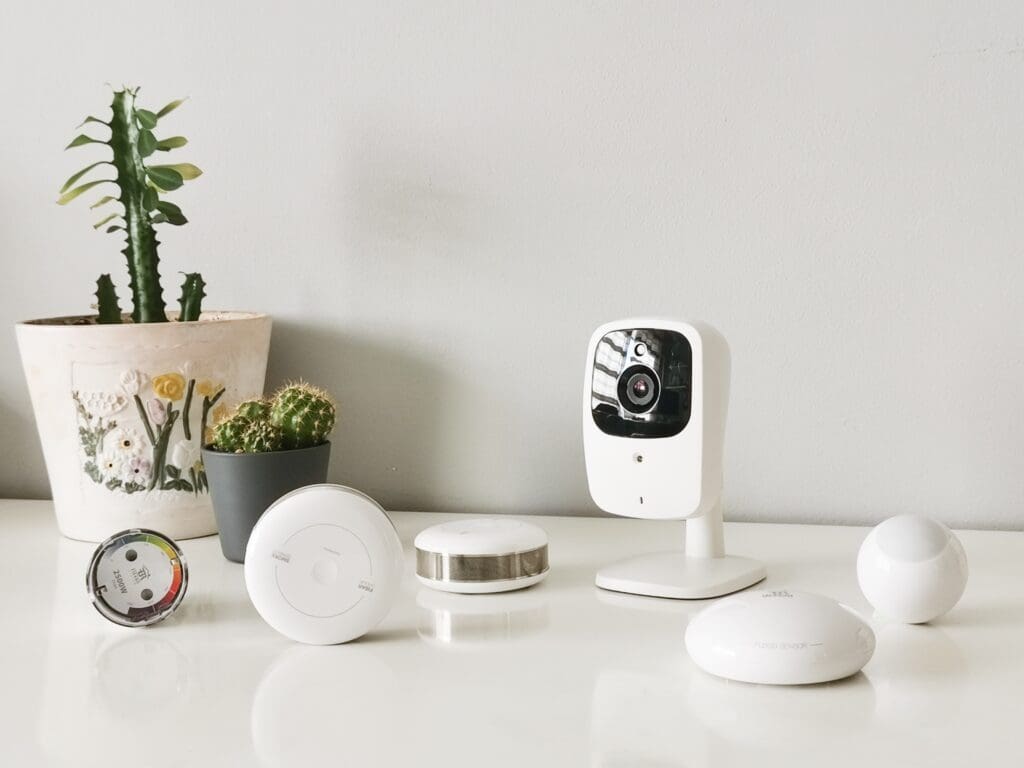
With countless smart home devices available, choosing the right ones for your needs can feel overwhelming. Start by considering the essential devices that form the foundation of a well-rounded smart home experience. A smart thermostat, like the Nest Learning Thermostat, allows you to intelligently control your home’s temperature, maximizing comfort while optimizing energy efficiency.
Intelligent lighting solutions, ranging from smart bulbs to smart switches, put you in complete control of your home’s ambiance and energy consumption. And for added peace of mind, a security camera provides remote monitoring and alerts, ensuring the safety and security of your home and loved ones.
Smart Thermostats for Energy Efficiency
One of the most impactful additions to a smart home is a smart thermostat, which offers a simple yet effective way to boost energy efficiency without sacrificing comfort. Unlike traditional thermostats, smart thermostats learn your temperature preferences and adapt automatically, ensuring your living space remains perfectly climate-controlled throughout the day.
Smart thermostats can be programmed to adjust temperature settings based on your schedule, occupancy, and even the weather outside, maximizing energy savings without requiring constant manual adjustments. Some models offer features like geofencing, which automatically adjusts the temperature as you come and go, ensuring a comfortable environment upon your arrival while conserving energy when you’re away. By optimizing heating and cooling cycles, smart thermostats can contribute to significant savings on your energy bills over time.
Furthermore, smart thermostats provide valuable insights into your energy consumption patterns, empowering you to make informed decisions about your energy usage. This data-driven approach not only benefits your wallet but also reduces your carbon footprint, aligning with a more sustainable lifestyle.
Intelligent Lighting Solutions
Transform the ambiance of your living space with intelligent lighting solutions that offer convenience, energy efficiency, and endless customization options. Smart lights, encompassing a range of devices from individual smart light bulbs to comprehensive smart lighting systems, put you in complete control of your home’s illumination, both indoors and outdoors.
Replace your traditional light bulbs with smart bulbs to experience the magic of voice control and app-based customization. Adjust brightness, color temperature, and even set schedules or create dynamic lighting scenes with a few taps on your smartphone or a simple voice command. Imagine walking into a room bathed in warm, inviting light or setting the perfect mood for a movie night with dimmed lights and a customized color scheme—all achievable with the power of smart lighting.
Beyond the convenience and aesthetic appeal, smart lighting also contributes to energy savings. Set schedules to automatically turn off lights in unoccupied rooms, or use dimming features to reduce energy consumption without sacrificing ambiance. With their versatility and potential for energy optimization, smart lights are an essential element of any modern, energy-efficient home.
Advanced Security Cameras and Systems
At the forefront of home automation lies the desire for enhanced security and peace of mind. Advanced security cameras and systems have revolutionized how we protect our homes and loved ones, providing a watchful eye both inside and outside our living spaces. Modern security cameras offer high-definition video recording, motion detection, and remote viewing capabilities, allowing you to monitor your home from anywhere in the world.
Choose indoor cameras to keep an eye on pets or loved ones or opt for weatherproof outdoor cameras to deter intruders and monitor activity around your property. Many home security systems integrate seamlessly with other smart devices, such as smart locks and motion sensors, creating a comprehensive network that enhances your home’s safety and deters potential threats. Receive instant alerts on your smartphone if any unusual activity is detected, allowing you to take appropriate action promptly. The integration of artificial intelligence (AI) further strengthens security systems by enabling facial recognition, distinguishing between familiar faces and potential intruders.
Automating Your Home for Comfort
Home automation extends far beyond just convenience and security; it also plays a crucial role in creating an environment optimized for comfort and relaxation. Imagine a home where the temperature is always perfect, entertainment is just a voice command away, and mundane tasks are handled effortlessly in the background.
Voice-controlled assistants, such as Amazon Echo and Google Home, have become the command centers for creating personalized comfort zones. Integrate these intelligent assistants with your smart devices, including climate control systems and entertainment setups, to achieve optimal comfort tailored to your preferences.
Voice-Controlled Assistants and Entertainment
Voice-controlled assistants, led by devices like the Amazon Echo, have emerged as central hubs for managing smart homes and creating seamless entertainment experiences. These intelligent companions respond to your voice commands, allowing you to effortlessly control various aspects of your home, including lighting, temperature, and even your entire home theater system.
Imagine settling into your living room and simply uttering, “Alexa, turn on the TV and play some jazz music.” Your Amazon Echo springs to action, dimming the lights, powering on your entertainment system, and filling the room with your favorite tunes – all without lifting a finger. The integration of voice-controlled assistants with streaming services such as Spotify, Netflix, and Apple Music has revolutionized home entertainment, making it easier than ever to access a world of movies, shows, and music with simple voice commands.
These assistants go beyond just passive entertainment control. Ask them about the weather, set timers, manage your calendar, control compatible smart home devices, or even order groceries online – all through the power of your voice.
Automating Climate Control for Optimal Comfort
Transform your home into a haven of optimal comfort with smart climate control solutions that anticipate your needs and seamlessly adjust temperature settings. A smart thermostat, the cornerstone of automated climate control, takes the guesswork out of maintaining a perfect indoor environment, ensuring a consistently comfortable temperature throughout the day.
By learning your routines and preferences, the smart thermostat automatically adjusts heating and air conditioning based on your schedule, presence, and even external weather conditions. This intelligent system not only maximizes comfort but also contributes to energy savings by optimizing heating and cooling cycles.
Imagine waking up to a gently warmed bedroom each morning or returning home to a perfectly cooled living space after a long day – all without touching a thermostat. Integrate your smart thermostat with other smart home devices, such as smart blinds or window sensors, to further enhance comfort and energy efficiency. For instance, program the blinds to close during the hottest part of the day, preventing excessive heat gain and reducing the load on your air conditioning system.
Enhancing Home Security with Automation
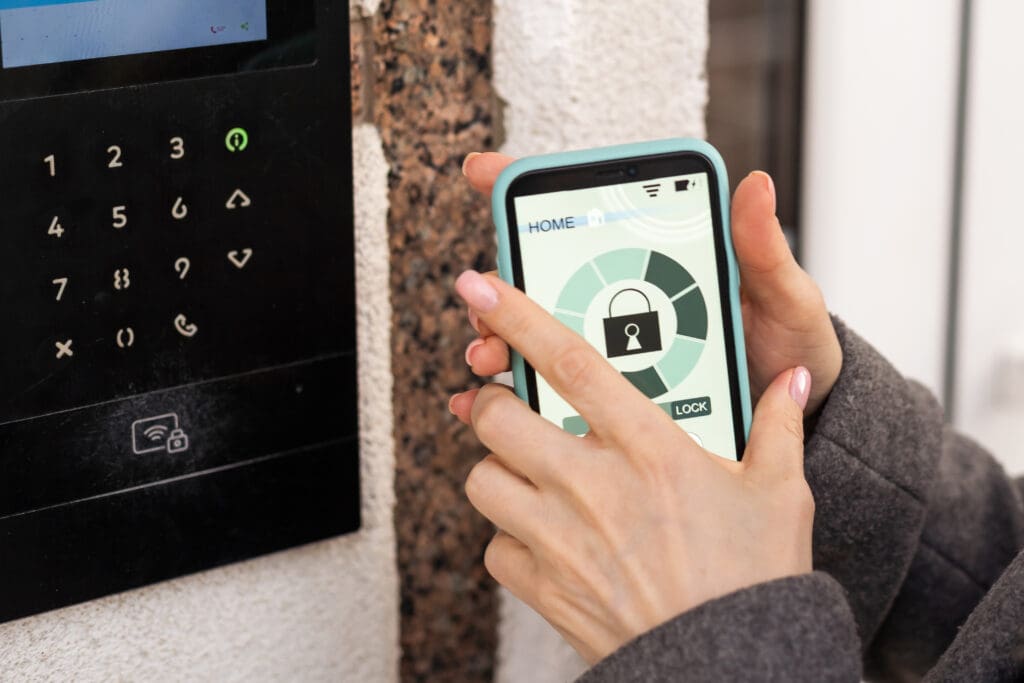
Home security is paramount, and automation offers an array of tools to safeguard your property and loved ones. Transitioning beyond traditional security systems, a smart home empowers you with proactive measures, remote monitoring capabilities, and intelligent responses to potential threats.
Implementing smart locks on entry doors provides enhanced access control, allowing you to monitor who comes and goes, grant temporary access to guests, and receive instant notifications if any unusual activity is detected. Complementing these smart locks, motion sensors strategically placed throughout your home serve as vigilant guardians, triggering alerts and automated responses in case of any suspicious movement.
The Role of Smart Locks and Doorbells
Smart locks and doorbells have become integral components of a modern home security system, offering enhanced security, convenience, and remote monitoring capabilities beyond traditional locks and doorbells. Smart locks replace your conventional deadbolts, providing keyless entry and remote access control. Lock and unlock your doors using your smartphone, grant temporary access to guests or service providers, and receive notifications whenever your door is opened or closed.
Some smart locks even integrate with other smart home devices, such as security cameras, allowing you to see who is at your doorstep before remotely unlocking the door. Complementing the security features of smart locks, video doorbells offer an added layer of protection and convenience.
These doorbells provide a live video feed of your front porch, enabling you to see and speak to visitors from anywhere in the world using your smartphone or tablet. Receive instant alerts when someone approaches your door, even if they don’t ring the doorbell. The integration of motion sensors in many video doorbells ensures that you are notified of any suspicious activity around your front door, even when you’re away from home.
Motion Sensors and Home Surveillance Techniques
Motion sensors are the unsung heroes of a comprehensive home security system, silently guarding your property and triggering alerts whenever they detect suspicious movement. Strategically placed throughout your home, these sensors act as invisible tripwires, providing an extra layer of protection that complements your existing security measures. When a motion sensor detects movement within its range, it sends a signal to your smart home hub or security system, triggering pre-set actions. These actions can include activating an alarm, sending you an instant notification on your smartphone, or even turning on lights to deter potential intruders.
Modern surveillance techniques go beyond simple motion detection, incorporating artificial intelligence (AI) to differentiate between human movement and other environmental factors such as swaying trees or passing animals. This intelligent filtering reduces false alarms, ensuring that you are only alerted to genuine security concerns.
Integrating motion sensors with other smart home devices opens up a world of possibilities for enhancing both security and convenience. For instance, connect a motion sensor in your hallway to your smart lighting system to automatically illuminate your path at night, adding an element of safety and convenience to your daily routine. The versatility and affordability of motion sensors make them an essential component of a well-rounded home security strategy, providing peace of mind and protection against unexpected intrusions.
Maximizing Efficiency with Smart Appliances
The heart of the home is often the kitchen, where smart appliances are transforming how we cook, clean, and manage daily tasks. These innovative appliances not only simplify your life but also contribute to a more energy-saving and environmentally conscious lifestyle.
Imagine a refrigerator that helps you create grocery lists based on its contents, an oven that preheats with a voice command, or a dishwasher that optimizes its cycle for both water and energy efficiency. Kitchen automation is no longer a futuristic fantasy but a tangible reality, thanks to the advancements in smart appliance technology.
Energy-Saving Smart Appliances
The modern home is embracing sustainability, and energy-saving smart appliances are leading the charge. These intelligent appliances are engineered not only to simplify our lives but also to reduce our environmental impact by minimizing energy and water consumption without compromising performance. Smart refrigerators, equipped with advanced sensors and connected features, optimize cooling efficiency and reduce food waste. Monitor the contents of your refrigerator remotely, create shopping lists based on what’s running low, and receive alerts if the door is left ajar, preventing energy loss.
Smart washing machines and dishwashers take the guesswork out of laundry and dishwashing, offering eco-friendly cycles that use less energy and water while delivering exceptional cleaning results. Many models allow you to schedule cycles for off-peak hours when energy rates are lower, further maximizing savings. Smart ovens with remote preheating and automated cooking programs streamline meal preparation, ensuring perfectly cooked dishes while minimizing energy waste.
The Future of Kitchen and Laundry Automation
The kitchens and laundry rooms of tomorrow are set to become even smarter and more efficient, thanks to the relentless advancements in new technology. Kitchen automation is poised to revolutionize how we interact with our kitchens, from meal planning and grocery shopping to cooking and cleaning. Imagine a refrigerator that suggests recipes based on available ingredients, automatically orders groceries online, and even interacts with your smart oven to preheat at the optimal time.
Smart countertops will double as interactive displays, guiding you through recipes, providing nutritional information, and even entertaining you with streaming content while you cook. In the laundry room, automation will continue its mission to simplify chores and optimize efficiency. Smart washing machines will identify fabric types and soil levels, automatically dispensing the correct amount of detergent and selecting the most appropriate washing cycle.
Integrating artificial intelligence (AI) and machine learning will further enhance appliance performance, allowing them to learn your preferences, adapt to your habits, and proactively maintain a clean, organized, and efficiently run kitchen and laundry room. New technology will continue to shape the future of kitchen and laundry automation, creating a truly connected home where daily tasks are seamlessly integrated and managed with minimal effort.
Our seamless smart home upgrade overview explains how to integrate new devices smoothly for a unified automation experience.
Integration and Interconnectivity
The true magic of smart home technology lies not in individual devices but in their ability to communicate and work together harmoniously. Creating a seamless smart home ecosystem requires careful consideration of device compatibility, ensuring that all components speak the same language and function in sync.
While a plethora of smart home devices flood the market, not all are created equal when it comes to interoperability. Choosing devices that share common communication protocols or integrate with popular smart home platforms such as Amazon Alexa, Google Assistant, or Apple HomeKit is crucial for building a cohesive and smoothly functioning smart home network.
Creating a Seamless Smart Home Ecosystem
Building a seamless smart home ecosystem involves more than just amassing a collection of individual smart devices. It’s about creating a harmonious environment where these devices communicate flawlessly, anticipate your needs, and work in concert to simplify your daily life. A well-integrated smart home system goes beyond isolated automation, offering a holistic experience where different components cooperate to maximize comfort, convenience, and efficiency.
Start by selecting a central control platform that aligns with your preferences and integrates with your chosen smart devices. Consider whether a dedicated smart hub or a comprehensive mobile app best suits your management style. Look for devices that support common communication protocols such as Wi-Fi, Bluetooth, Zigbee, or emerging standards like Matter, which aims to unify smart home communication and enhance device interoperability.
As you build your smart home ecosystem, envision how different devices can work together to create personalized automation scenes. Imagine arriving home to a well-lit entryway, a comfortable temperature, and your favorite music playing softly in the background, all triggered by a single command or the detection of your presence.
Challenges and Solutions in Device Compatibility
Navigating the rapidly evolving world of smart home technology often presents challenges in ensuring seamless device compatibility. With various manufacturers, communication protocols, and smart home platforms vying for dominance, building a fully integrated system requires careful planning and research.
One of the primary challenges stems from the lack of a universal communication standard. While Wi-Fi has emerged as a dominant protocol, other protocols like Bluetooth, Zigbee, or Z-Wave are also prevalent, creating potential compatibility roadblocks.
A possible solution lies in choosing devices that support multiple protocols or opting for a central hub that acts as a translator, bridging communication between devices using different protocols. Another challenge arises when integrating devices from different manufacturers, each with its own ecosystem and mobile app.
To overcome this, look for devices that integrate with popular smart home platforms such as Amazon Alexa, Google Assistant, or Apple HomeKit. These platforms act as central control points, allowing you to manage devices from multiple brands through a single interface.
The Impact of Home Automation on Lifestyle

Home automation isn’t just about gadgets; it’s about transforming your lifestyle by infusing convenience, efficiency, and personalization into everyday tasks. From the moment you wake up to the time you bid your smart home goodnight, automation simplifies daily life, freeing up valuable time and mental energy for the things that matter most.
But the impact of a smart home extends beyond daily convenience; it offers long-term benefits that enhance your overall quality of life, including peace of mind knowing your home is secure, a reduced environmental impact through optimized energy consumption, and the ability to age in place more comfortably and independently.
Daily Life Simplified through Automation
Imagine a daily routine where mundane tasks are effortlessly handled in the background, freeing you to focus on the things that bring joy and fulfillment. This is the promise of a smart home, where automation seamlessly integrates into your daily life, simplifying routines and enhancing overall comfort. Picture this: as your alarm gently wakes you, the aroma of freshly brewed coffee fills the air, and your smart speaker reads you the day’s headlines while the blinds gradually raise to greet the morning light.
These are just a few examples of the smart home benefits that streamline your day and elevate your living experience. Leaving for work? A single voice command or automated schedule arms your security system, turns off lights, and adjusts the thermostat to conserve energy. Returning home after a long day? Your smart home anticipates your arrival, adjusting the lighting, temperature, and even starting your favorite playlist as you step through the door.
Long-Term Benefits of Investing in Smart Home Technology
Investing in smart home technology goes beyond immediate convenience and offers numerous long-term benefits that enhance quality of life, improve sustainability, and provide valuable peace of mind. One of the most significant long-term benefits is the potential for energy savings. Smart thermostats, intelligent lighting systems, and energy-efficient appliances collaborate to optimize energy consumption, reducing your carbon footprint and leading to noticeable reductions in utility bills over time.
Smart home technology also plays a crucial role in aging in place, allowing seniors and individuals with mobility challenges to maintain independence and safety within their homes. Automated lighting, voice-controlled assistants, and smart security systems provide an extra layer of safety and convenience, making it easier to navigate daily tasks and stay connected.
Moreover, a well-integrated smart home offers invaluable peace of mind. Remote monitoring capabilities, instant alerts, and automated security features ensure that your home is protected even when you’re away, providing a sense of security and reassurance that traditional systems often lack.
Transform Your Home Today!
Home automation offers convenience, efficiency, and enhanced security for modern living. By understanding the basics, planning effectively, and selecting the right devices, you can create a smart home tailored to your needs. Embrace the future of technology integration and enjoy the benefits of a seamlessly interconnected living space. Start your journey towards a smarter home today and experience the transformative impact of automation on your lifestyle.
For further guidance on automating your home, feel free to get in touch with us. Let’s make your vision of a connected home a reality!
Frequently Asked Questions
Can home automation really save money on utilities?
Yes, smart devices like thermostats and lighting systems optimize energy usage, leading to long-term savings on utilities. By automating these systems to adjust based on your schedule and preferences, you consume less energy and reduce your bills.
Can I integrate old appliances into a new smart home system?
While direct integration might not always be possible, you can use smart plugs or adapters to connect older appliances to your smart home system, enabling some level of control and automation. However, checking compatibility before purchasing any adapters is essential.



